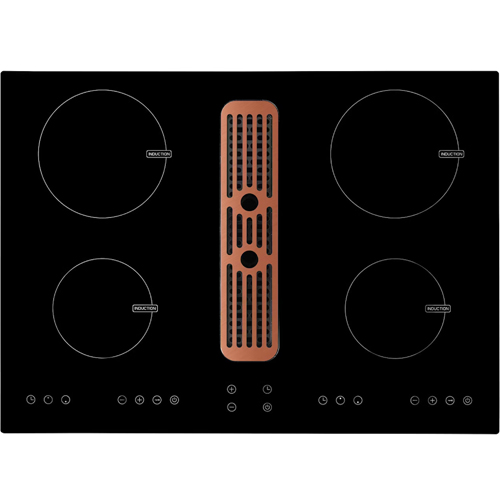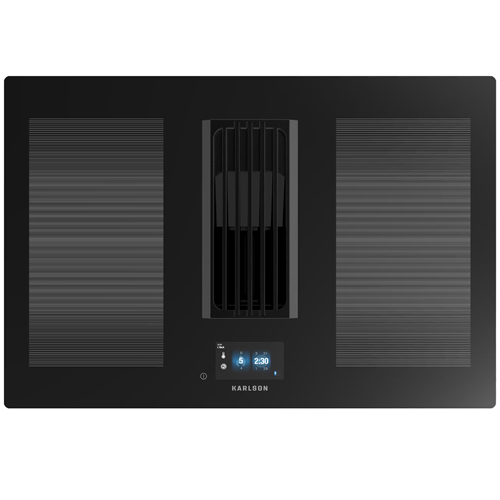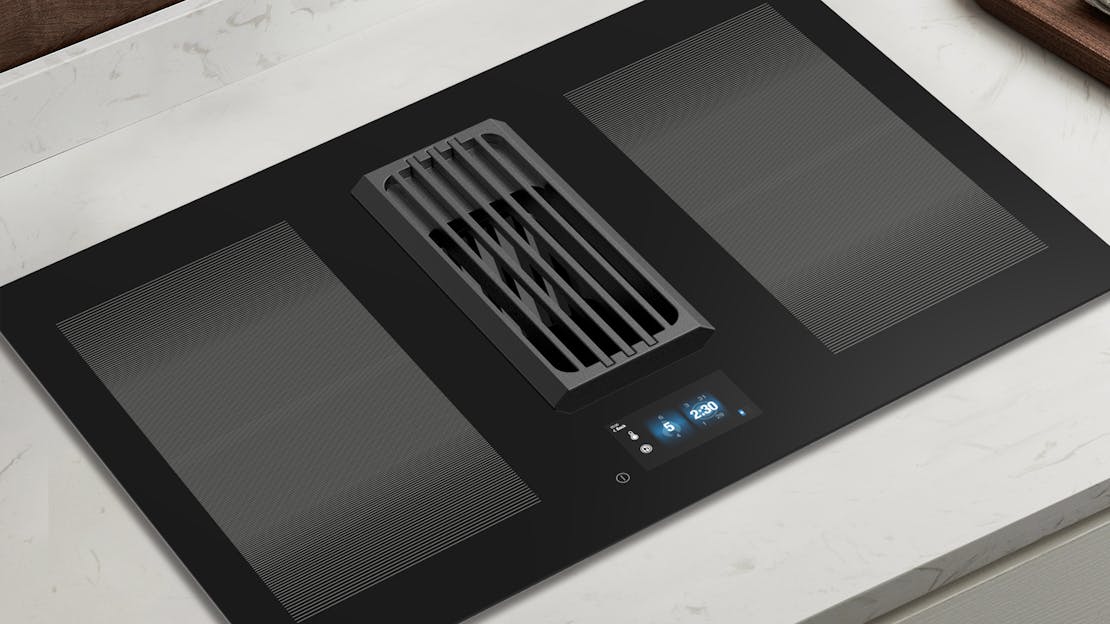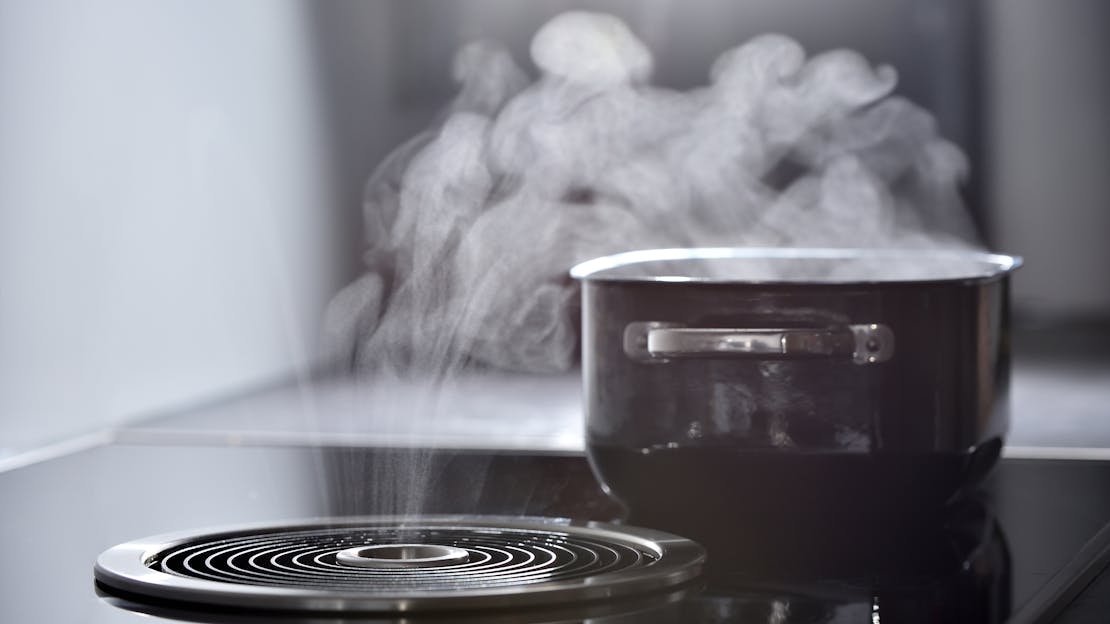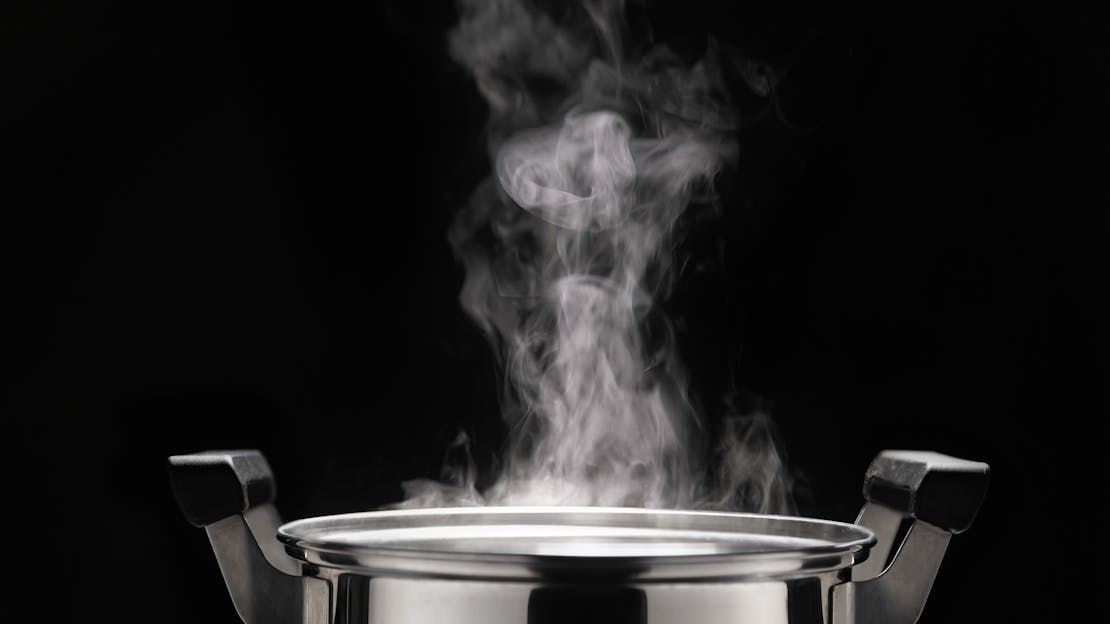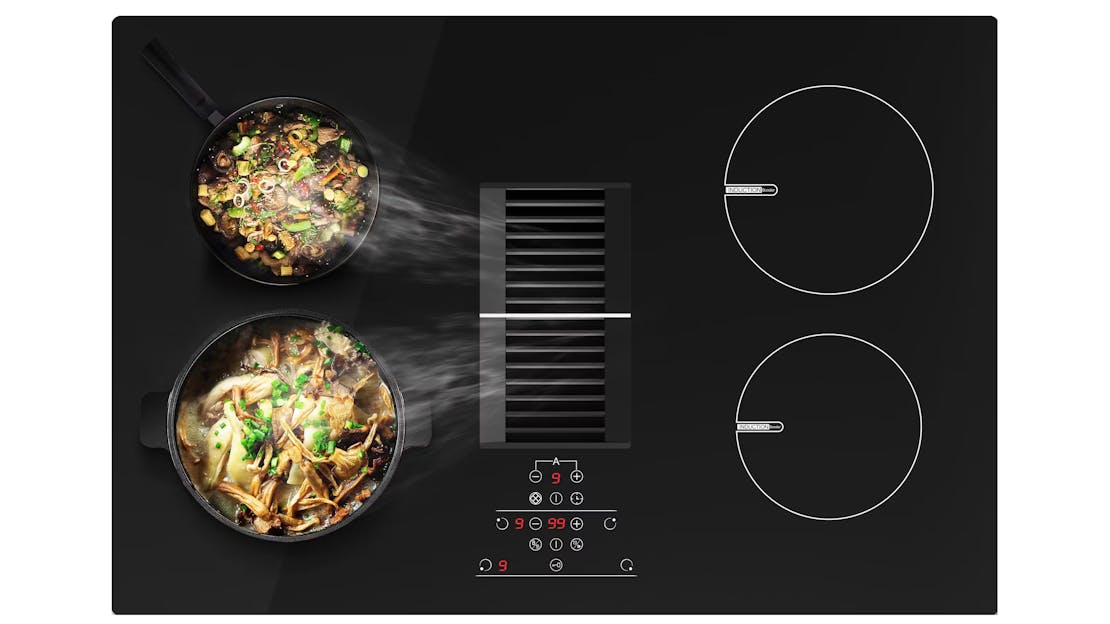
The Ultimate Guide to Vented Hobs
In recent years, Vented Hobs, also known as Downdraft Induction Hobs, have seen a significant uptick in popularity, reshaping the landscape of kitchen appliances. This guide delves into the factors driving their ascent, from their space-saving design to their efficient cooking experience. Uncover why Vented Hobs are becoming the preferred choice for contemporary kitchens, offering a seamless remedy for cooking fumes and odours while seamlessly combining culinary excellence with innovative technology.
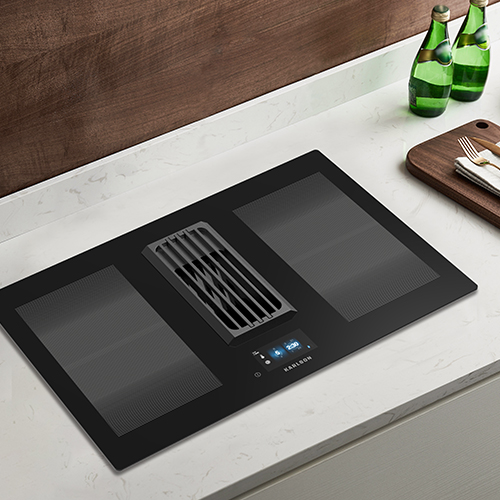
Introduction to Vented Induction Hobs:
What are vented induction hobs?
Vented induction hobs are kitchen appliances that combine an induction hob with an integrated ventilation system. They efficiently cook and extract smoke and odours directly from the hob, eliminating the need for a separate extractor fan and saving space in the kitchen.
How do vented induction hobs work?
Vented induction hobs operate by combining an induction hob with an integrated ventilation system. Here's how they work:
Induction Cooking:
Vented induction hobs utilise electromagnetic induction technology to directly heat your cookware. When you place a compatible pot or pan on the cooking zone, the hob generates an electromagnetic field that induces heat within the cookware. This approach offers precise temperature control and rapid heating.
Integrated Ventilation:
What distinguishes vented hobs is the inclusion of a built-in ventilation system. This system typically consists of a potent fan, filters, and ductwork. During cooking, steam, smoke, and cooking odours rise from the cookware. The integrated fan captures these by-products directly from the hob's surface.
Air Filtration:
The captured steam, smoke, and odours are then drawn through filters within the ventilation system. These filters are designed to trap grease and particles, ensuring that the expelled air is cleaner and devoid of cooking contaminants.
Exhaust or Recirculation:
Following filtration, the purified air can either be expelled outside your home through ductwork or recirculated back into your kitchen after purification, depending on the specific model.
In summary, vented induction hobs efficiently prepare food while simultaneously extracting steam, smoke, and odours directly from the cooking surface. This makes them a space-saving and effective solution for kitchen ventilation.
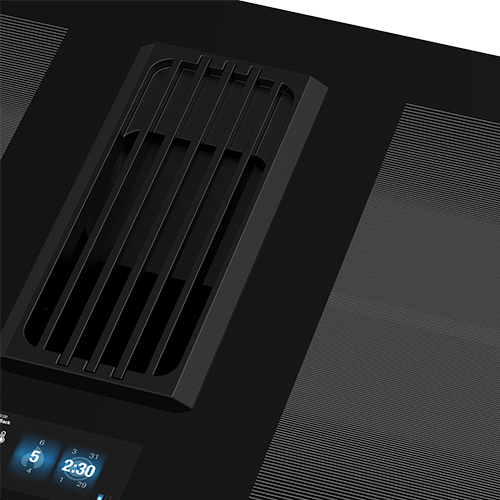
What are the Advantages of Vented Induction Hobs:
Vented induction hobs have gained immense popularity in the culinary world, and their appeal is well-founded. These innovative kitchen appliances offer a host of advantages that make them a compelling choice for both amateur cooks and seasoned chefs. Let's explore some of these key benefits:
Energy Efficiency: Vented Induction Hobs are renowned for their remarkable energy efficiency. Unlike traditional gas cooktops that release heat into the kitchen, induction hobs transfer heat directly to the cookware, minimising heat loss and reducing energy consumption. This not only saves you money on energy bills but also contributes to a more eco-friendly kitchen environment.
Cooking Speed: Induction technology excels at rapid heating. Vented hobs provide precise and instant temperature control, allowing you to bring pots and pans to the desired heat level quickly. This feature is a game-changer for recipes with time constraints, ensuring your dishes are ready in no time.
Safety Features: Safety is of paramount importance in the kitchen, and Vented Induction Hobs are equipped with a range of safety features. They often come with child safety locks, overheat protection, and auto-shutdown functions. Furthermore, the absence of open flames reduces the risk of accidental burns or fires.
Ease of Cleaning: Cleaning up after a culinary masterpiece has never been simpler. The smooth, flat surface of induction hobs is easy to wipe clean, and since the surface itself doesn't get as hot as traditional cooktops, spills and splatters are less likely to burn onto the surface. Additionally, many Vented Hobs feature dishwasher-safe filters, making maintenance a breeze.
Space-Saving Design: In kitchens where space is at a premium, Vented Induction Hobs truly shine. They eliminate the need for a bulky overhead range hood or extractor fan, freeing up valuable countertop and cabinet space. This space-saving design also contributes to a more open and aesthetically pleasing kitchen.
These advantages collectively make Vented Induction Hobs an appealing choice for those seeking an efficient, safe, and user-friendly cooking experience while optimising their kitchen's space and energy usage.
Downdraft vs. Updraft Ventilation Systems:
Downdraft Ventilation Systems: Downdraft Vented Hobs feature ventilation systems that draw cooking by-products, such as steam and odours, downwards, directly from the cookware. These systems are discreet and hidden when not in use, popping up when needed during cooking. Downdraft systems are an excellent choice for those who prefer a minimalist kitchen design and don't want an overhead hood obstructing their view.
Updraft Ventilation Systems: In contrast, Updraft Vented Hobs have ventilation systems that pull cooking by-products upwards, capturing them from above the cookware. These systems are typically more visible but are highly effective in removing smoke and odours. They are a good option if you want a more traditional and prominent ventilation solution in your kitchen
Installation and Setup of Vented Induction Hobs
Installing a Vented Induction Hob is a crucial step to ensure its efficient operation and safety. Proper installation involves considering factors such as location, ventilation, and electrical requirements. Let's delve into these essential aspects:
1. Location and Placement Considerations:
Kitchen Layout: Assess your kitchen's layout to determine the ideal placement for the Vented Induction Hob. Take into account factors such as proximity to cooking utilities, access to electrical outlets, and the flow of kitchen traffic. Make sure there is sufficient countertop space nearby for food preparation.
Clearance and Safety: Vented induction hobs require specific clearance distances from adjacent walls, cabinets, and flammable materials to ensure safe operation. Refer to the manufacturer's guidelines for recommended clearances, which may vary depending on the model.
2. Ventilation Requirements:
Ventilation System: Ensure that the ventilation system, whether downdraft or updraft, is correctly connected and installed. For downdraft systems, it's essential to have space beneath the hob for the retractable vent to operate effectively. Confirm that the ductwork is properly connected for expelling extracted air outside or into a recirculating system with appropriate filters.
Exhaust and Ductwork: If your vented hob necessitates ductwork to expel air outdoors, plan for the installation of ducts and their routing. It's crucial to establish a secure and airtight connection to prevent leaks and ensure efficient ventilation.
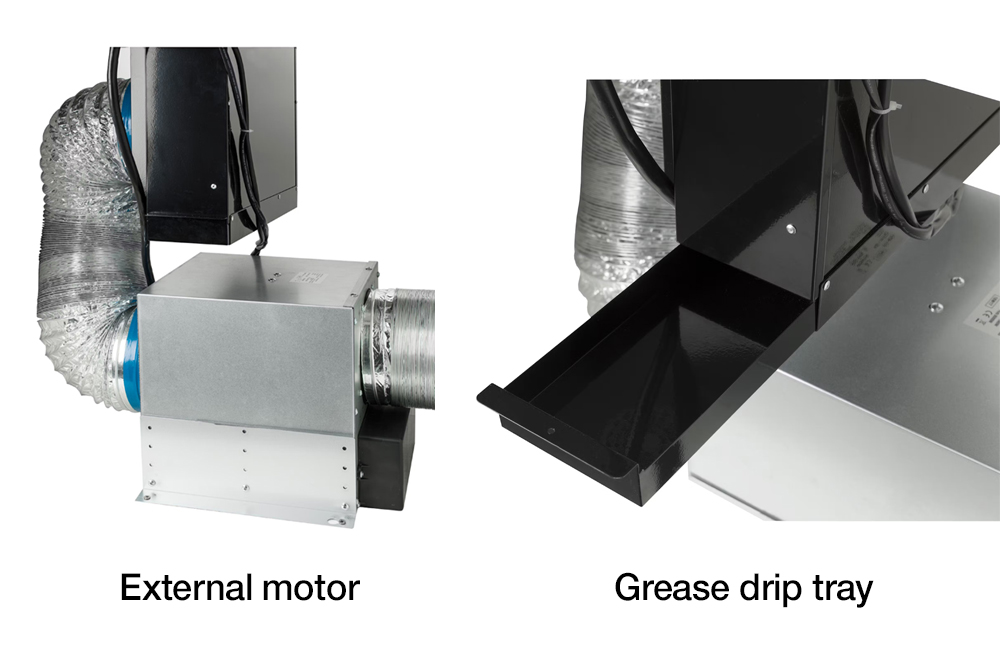
3. Electrical Requirements:
Voltage and Amperage: Vented Induction Hobs typically have specific electrical requirements regarding voltage and amperage. Ensure that your kitchen has the suitable electrical supply to meet the hob's specifications. Consult the manufacturer's specifications for precise electrical requirements.
Professional Installation: Electrical installation should be carried out by a certified electrician to guarantee safety and compliance with local electrical codes. They will ensure that the wiring and connections are done correctly and safely.
In summary, proper installation and setup of a Vented Induction Hob entail careful consideration of location, clearance, ventilation, and electrical requirements. Following the manufacturer's guidelines and, when necessary, seeking the expertise of professionals for installation ensures not only efficient operation but also a safe and functional kitchen environment.
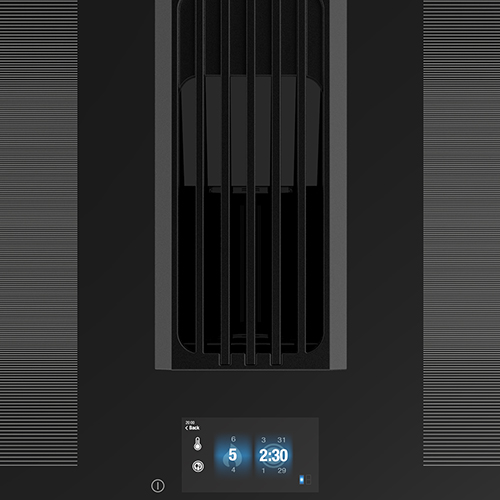
Choosing the Right Vented Induction Hob
Selecting the ideal vented induction hob for your kitchen entails assessing several key factors to ensure it aligns with your cooking needs and preferences. Here are the critical considerations to bear in mind:
1. Size and Cooking Zones:
Cooktop Size: Begin by determining the size of the Vented Induction Hob that fits your kitchen space. Take into account the available countertop area and the hob's dimensions. Vented Hobs are available in various sizes, so choose one that complements your kitchen layout without overcrowding it.
Number of Cooking Zones: Evaluate how many cooking zones or elements you require. Vented Induction Hobs come with multiple cooking zones, typically ranging from two to five or more. Select a hob with the right number of zones to accommodate your usual cooking tasks and the size of your cookware.
2. Power and Heat Settings:
Power Levels: Examine the hob's power levels and heat settings. Different models offer varying power output, affecting how quickly the hob heats up and cooks food. Opt for a Vented Hob with a range of power levels that suits your cooking style, from gentle simmering to high-heat searing.
Booster Function: Some Vented Hobs include a booster function, providing an extra burst of heat for rapid boiling or intense searing. If you value speed in your cooking, a hob with a booster function can be a valuable addition.
3. Additional Features and Technologies:
Touch Controls: Consider the control interface. Many Vented Hobs feature touch controls for intuitive and precise operation. Check if the controls are responsive and user-friendly.
Safety Features: Assess the safety features offered by the hob. Look for child safety locks, overheat protection, and automatic shut-off functions to ensure a secure cooking experience.
Bridge Zones: Some models offer bridge zones or flex zones, allowing you to combine two adjacent cooking zones into a larger one. This feature is useful for accommodating larger cookware or griddles.
Cooking Sensors: Advanced Vented Hobs may come equipped with cooking sensors that detect the size and placement of your cookware, automatically adjusting the heat accordingly for optimal cooking results.
Timer and Delay Start: Check if the hob has a built-in timer and delay start function, which can be convenient for multitasking and precise meal planning.
Wi-Fi Connectivity: In some high-tech models, Wi-Fi connectivity enables remote control and monitoring through smartphone apps, providing added convenience and flexibility.
By carefully considering these factors, you can select a Vented Induction Hob that perfectly suits your cooking requirements, ensuring efficient and enjoyable culinary experiences in your kitchen.
Maintenance and Cleaning of Vented Induction Hobs
Maintaining and cleaning your vented induction hob is essential to ensure its longevity, optimal performance, and a hygienic cooking environment. Proper care involves attention to the induction cooktop, the ventilation system, and filter replacement. Let's explore the steps for each of these aspects:
1. Cleaning Induction Cooktops:
Regular Cleaning: Wipe down the induction cooktop after each use with a damp, soapy cloth or a recommended induction cooktop cleaner. This prevents food residue and spills from hardening onto the surface.
Stubborn Stains: For stubborn stains or burnt-on residues, use a specialized induction scraper or a non-abrasive cleaning pad. Be gentle to avoid scratching the glass surface.
Avoid Abrasive Materials: Do not use abrasive scouring pads, steel wool, or harsh chemicals, as they can damage the glass surface.
2. Cleaning the Ventilation System:
Exterior Cleaning: Clean the exterior surfaces of the ventilation system regularly with a damp cloth and mild detergent. Ensure that the controls and buttons are kept clean and free from grease.
Internal Cleaning: Periodically, inspect the interior components of the ventilation system. Remove any accumulated debris or grease build-up. Some Vented Hobs have easily accessible parts for cleaning, while others may require professional maintenance. Refer to the manufacturer's instructions for guidance.
3. Filter Replacement and Maintenance:
Filter Inspection: Check the filters in the ventilation system regularly. Grease and particle filters can become clogged over time, affecting the efficiency of the ventilation. If you notice a decrease in performance or increased noise, it may be time to inspect the filters.
Filter Cleaning: Many Vented Hobs have removable and washable filters. Follow the manufacturer's guidelines for cleaning these filters. Typically, they can be soaked in warm, soapy water, rinsed thoroughly, and allowed to dry before reinstallation.
Filter Replacement: Depending on your cooking habits and the type of filter used, you may need to replace filters periodically. Refer to the manufacturer's recommendations for the appropriate filter replacement schedule. Replacement filters are usually available from the manufacturer or authorized dealers.
By adhering to these maintenance and cleaning practices, you can ensure that your Vented Induction Hob continues to operate efficiently and maintains a clean and hygienic cooking environment. Regular care not only extends the lifespan of your appliance but also enhances the overall cooking experience in your kitchen.

Cooking Techniques and Tips for Vented Induction Hobs
Cooking with Induction Technology:
Precise Temperature Control:
Take advantage of the precise temperature control offered by induction technology. Adjust the heat level to suit your cooking needs accurately, whether it's simmering delicate sauces or searing meats at high temperatures.
Instantaneous Heat:
Induction hobs heat up rapidly, so be prepared to start cooking as soon as you turn on the hob. This speed can be advantageous for boiling water quickly or achieving the perfect sear on a steak.
Use of Magnetic Cookware:
Induction hobs require compatible magnetic cookware. Ensure that your pots and pans have a flat, magnetic base for efficient heat transfer. Cookware made of stainless steel, cast iron, or other magnetic materials is suitable.
Ventilation Tips for Different Cooking Styles:
Boiling and Simmering:
For recipes that involve boiling or simmering, use a lid on your cookware to contain steam and reduce the release of moisture into the air. Adjust the ventilation system to the appropriate level to capture any excess steam.
Searing and Stir-frying:
High-heat cooking methods such as searing or stir-frying may generate more smoke and odours. Increase the ventilation power to effectively capture and remove these by-products, preventing them from spreading throughout your kitchen.
Deep Frying:
When deep frying, ensure the ventilation system is operating at full capacity. Deep frying produces significant amounts of steam and cooking odours. A well-functioning ventilation system keeps the air clean and your kitchen odour-free.
Use of Compatible Cookware:
Check Cookware Compatibility:
Confirm that your cookware is compatible with induction technology. To test, place a magnet on the base of your pots and pans; if it sticks, they are suitable for induction cooking.
| Type of Pan | Suitable for Vented Induction Hobs |
|---|---|
| Stainless Steel | Yes |
| Cast Iron | Yes |
| Enamelled Cast Iron | Yes |
| Carbon Steel | Yes |
| Non-Stick (Coated) | Yes (Ensure it's induction-compatible) |
| Copper | Yes (With an induction-compatible base) |
| Aluminium | Yes (With an induction-compatible base) |
| Glass | No (Not compatible with induction) |
| Ceramic | No (Not compatible with induction) |
| Copper-bottomed | Yes (With an induction-compatible base) |
It's essential to check for the induction compatibility label or symbol on the pan's packaging to ensure that it can be safely used with a vented induction hob.
Optimal Cookware Size:
Select cookware that matches the size of the cooking zones on your Vented Induction Hob. Using cookware that is too small or too large for the zone can result in uneven heating and energy wastage.
Flat and Clean Cookware Base:
Ensure that the base of your cookware is clean and free from food residue. A flat and clean surface maximizes contact with the induction cooktop, allowing for efficient heat transfer.
By mastering these cooking techniques and tips, you can make the most of your Vented Induction Hob's capabilities. Precise temperature control, effective ventilation, and the right choice of cookware will elevate your culinary creations and enhance your overall cooking experience.
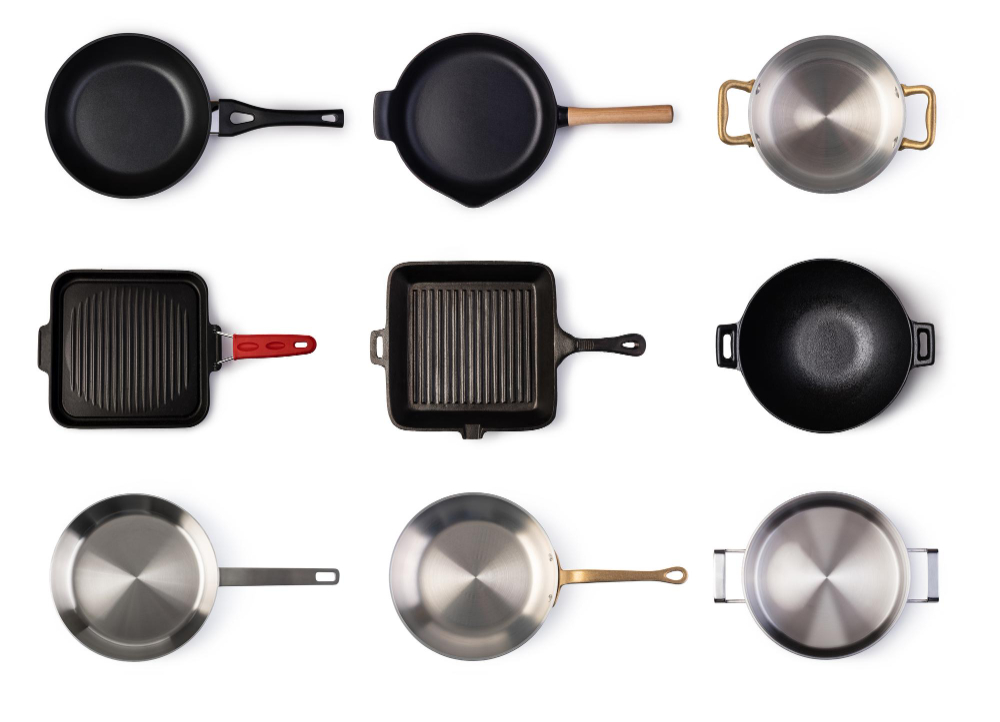
Safety Guidelines for Vented Induction Hobs
Safety is paramount when using a Vented Induction Hob. Understanding and following safety guidelines not only ensures a secure cooking environment but also extends the lifespan of your appliance. Here are some essential safety measures to consider:
Child Safety Locks:
Activate Child Safety Locks: Vented Induction Hobs often come equipped with child safety locks. These locks prevent children from accidentally turning on the hob or adjusting the settings. Before leaving the kitchen, especially if there are young children around, activate the child safety lock to avoid any mishaps.
Keep Controls Out of Reach: Store any remote controls or touchpad controls out of children's reach when not in use. This further reduces the risk of unintended operation.
Overheating Protection:
Monitor Cooking Temperatures: While induction hobs are known for their rapid heating and precise temperature control, it's essential to monitor your cooking closely. Avoid leaving cookware on a hot hob without food, as this can cause overheating. If a cooking zone becomes too hot, the hob's overheating protection should automatically shut it off. However, it's best to prevent overheating in the first place.
Ventilation System Safety:
Regular Maintenance: Ensure that the ventilation system of your Vented Induction Hob is well-maintained. Clean filters and components as recommended by the manufacturer to prevent blockages and maintain efficient airflow. A well-maintained ventilation system ensures the effective removal of cooking by-products.
Avoid Obstructions: Keep the ventilation system's air intake and exhaust areas free from obstructions. Blocked vents can hinder the system's performance and potentially lead to overheating.
Proper Ductwork: If your Vented Hob expels air outside through ductwork, make sure the ducts are correctly installed, airtight, and free from obstructions. This ensures that extracted air is safely and efficiently expelled outdoors.
By adhering to these safety guidelines, you can enjoy your Vented Induction Hob with confidence, knowing that you are cooking in a secure and controlled environment. Child safety locks, overheating protection, and proper ventilation system maintenance all contribute to a safe and enjoyable cooking experience.
Troubleshooting Common Issues
While Vented Induction Hobs are known for their reliability and efficiency, occasional problems may occur. Understanding common issues and their solutions can help you resolve minor hiccups and determine when it's time to seek professional assistance.
Common Problems and Solutions:
Hob Not Heating Up:
- Solution: Ensure that you are using compatible magnetic cookware with a flat, clean base. Check for any loose or disconnected power cords. If the hob still doesn't heat up, it may be due to a malfunctioning heating element or control panel, requiring professional repair.
Uneven Heating:
- Solution: Make sure your cookware is appropriately sized for the cooking zone you are using. Induction hobs work most efficiently when the cookware matches the size of the zone. Additionally, verify that the cookware base is flat and in good condition.
Cooktop Display Issues:
- Solution: If the display shows error codes or malfunctions, refer to the user manual for troubleshooting guidance. Often, a simple reboot by turning off the hob and unplugging it for a few minutes can resolve display issues. If the problem persists, contact a professional technician.
Ventilation System Not Working:
- Solution: Check if the ventilation system is clean and free from blockages. Ensure that the filters are not clogged and are correctly installed. If the system still doesn't function, it may require servicing by a qualified technician.
Unusual Noise:
- Solution: Minor humming or clicking sounds are normal during operation. However, if you hear unusual or loud noises, it could indicate a mechanical issue within the hob or ventilation system. In such cases, it's advisable to seek professional assistance to diagnose and rectify the problem.
When to Seek Professional Assistance:
While you can troubleshoot and address some common issues with your Vented Induction Hob, there are situations when professional assistance is necessary:
Electrical Problems: If you suspect electrical issues, such as power supply problems, wiring faults, or control panel malfunctions, it's best to have a licensed electrician or appliance technician inspect and repair the hob.
Complex Malfunctions: For complex malfunctions, error codes, or issues with internal components, it's advisable to contact the manufacturer's customer service or a certified appliance repair service. Attempting to fix intricate problems without expertise can lead to further damage.
Warranty Coverage: If your Vented Induction Hob is under warranty, check the warranty terms and conditions. Attempting DIY repairs may void the warranty, so it's often better to use authorised service providers recommended by the manufacturer.
By troubleshooting common issues and knowing when to seek professional help, you can ensure that your Vented Induction Hob continues to provide efficient and trouble-free cooking experiences.

Comparing Vented Induction Hobs to Other Hobs
Vented Induction Hobs offer a unique cooking experience that sets them apart from traditional gas and electric hobs. Let's explore the pros and cons of Vented Induction Hobs compared to gas and electric alternatives, as well as their energy efficiency:
Pros and Cons of Vented Induction Hobs:
Pros:
Energy Efficiency: Vented induction hobs are highly energy-efficient. They generate heat directly in the cookware, resulting in faster heating and precise temperature control. They waste less energy as heat escapes to the surroundings, making them more efficient than gas and electric hobs.
Safety: Induction hobs remain cool to the touch, reducing the risk of burns. They also offer features like automatic shut-off and child safety locks for added safety.
Ease of Cleaning: The flat, glass surface of induction hobs is easy to clean, as spills and splatters don't get baked onto the surface. Many models also have removable and dishwasher-safe filters in the ventilation system.
Ventilation Integration: Vented induction hobs come with built-in ventilation systems that efficiently capture cooking by-products, eliminating the need for a separate range hood and saving space.
Cons:
Compatibility: They require magnetic cookware with a flat base. If your existing cookware is not compatible, you may need to invest in new pots and pans.
Initial Cost: Vented induction hobs tend to have a higher initial purchase cost compared to traditional gas or electric hobs.
Gas Hobs:
Pros:
Instant Heat: Gas hobs offer instant heat and precise temperature control, similar to induction hobs.
Compatibility: They work with a wide range of cookware types, and there's no need to replace existing pots and pans.
Cons:
Energy Efficiency: Gas hobs are less energy-efficient than induction hobs because they release heat into the kitchen, leading to energy wastage.
Safety Concerns: Gas hobs pose a higher risk of burns due to open flames. They also lack some safety features found in induction hobs.
Cleaning: Cleaning gas burners and grates can be more challenging compared to induction hobs.
Electric Hobs:
Pros:
Affordability: Electric hobs are often more budget-friendly compared to induction hobs.
Compatibility: They work with various cookware types.
Cons:
Energy Efficiency: Electric hobs are less energy-efficient than induction hobs due to slower heating and heat dispersion.
Slower Heating: They take longer to heat up and cool down compared to induction hobs.
Safety Concerns: Electric hobs can remain hot after cooking, posing a burn risk.
Energy Efficiency Comparisons:
Vented Induction Hobs are the most energy-efficient choice among the three. They heat up quickly, waste minimal energy, and maintain precise temperature control.
Gas hobs are less energy-efficient as they release heat into the kitchen. While the flames provide instant heat, they can be less precise, leading to energy wastage.
Electric hobs are typically the least energy-efficient, as they take longer to heat up and cool down. Their heating elements can be less precise than induction technology.
In summary, Vented Induction Hobs offer superior energy efficiency, safety features, and ease of cleaning, although they may require compatible cookware and come at a higher initial cost. Gas hobs offer instant heat but are less energy-efficient and have safety concerns. Electric hobs are budget-friendly but are slower to heat and less energy-efficient. The choice depends on your cooking preferences, safety priorities, and budget constraints.

Cost and Budget Considerations
When contemplating the acquisition of a Vented Induction Hob, it's crucial to grasp the pricing range, factors influencing the cost, and the potential long-term savings linked to this investment.
Pricing Range and Factors Affecting Cost:
Pricing Range: Vented induction hobs typically span in price from £500 to £2,000 or more, contingent upon the brand, model, size, and features. High-end models with advanced technologies and more extensive cooking zones generally fall on the upper end of the pricing scale.
Brand and Model: The brand and specific model of the Vented Induction Hob significantly contribute to the cost. Well-established brands with strong reputations may carry a premium price tag.
Size and Cooking Zones: The number of cooking zones and their dimensions influence the cost. Larger hobs with more cooking zones are typically more expensive than their smaller counterparts.
Features and Technologies: Advanced features like touch controls, automatic temperature adjustment, and integrated sensors can escalate the cost. Models equipped with Wi-Fi connectivity and integration into smart home systems may also come with a higher price.
Ventilation System: The complexity and effectiveness of the incorporated ventilation system can impact the cost. Models featuring robust fans and advanced filtration systems may command a higher price.
Installation: It's imperative to account for the cost of installation, encompassing any necessary electrical work or modifications to accommodate the hob. Professional installation ensures a safe and proper setup.
Long-Term Savings with Induction Hobs:
Whilst the initial cost of a Vented Induction Hob may exceed that of traditional gas or electric hobs, it's crucial to contemplate the long-term savings that can counterbalance this initial investment:
Energy Efficiency: Induction hobs are exceptionally energy-efficient. They heat up swiftly and exclusively transfer heat to the cookware, mitigating energy wastage. Over time, this can result in lower energy bills compared to gas or electric hobs.
Precision Cooking: The precise temperature control of induction hobs can prevent overcooking or scorching of food, diminishing food wastage and economising on grocery expenses.
Cleaning and Maintenance: Induction hobs are straightforward to clean, and their built-in ventilation systems often incorporate washable filters. This reduces the requirement for costly professional cleaning services.
Safety: Safety features like child locks and automatic shut-off can forestall accidents, potentially sparing on medical expenses and repair costs.
Durability: High-quality induction hobs are engineered for longevity, diminishing the necessity for frequent replacements.
Space-Saving: Vented Induction Hobs merge cooking and ventilation within a single appliance, conserving space in your kitchen that would otherwise be occupied by a separate range hood.
When evaluating the cost of a Vented Induction Hob, it's pivotal to contemplate not solely the initial price but also the potential long-term savings and advantages it can bring to your kitchen and household. Over time, the efficiency, safety, and convenience of induction cooking can make it a cost-effective choice for numerous homeowners.
User Experiences with Vented Induction Hobs
Feedback from others is invaluable as it offers insights, perspectives, and real-world experiences that help us make informed decisions. Here, we present a collection of experiences and feedback from individuals who have embraced the installation of vented induction hobs in their kitchens:
"I recently upgraded my kitchen with a downdraft hob, and it's been a game-changer! The precision and speed of cooking with induction are remarkable. I can effortlessly switch between simmering and high-heat searing, all while maintaining precise control over the temperature. The built-in ventilation system is a dream – it whisks away steam and cooking odours like a pro. No more lingering smells in my kitchen! Plus, the ease of cleaning is fantastic. I used to dread scrubbing my old gas hob, but with this induction hob, spills wipe clean in seconds. I couldn't be happier with my choice!"
"I had reservations about transitioning from a gas hob to an induction hob, but I can't believe I waited so long! The induction hob is not only easy to use, but also incredibly safe. I have young children, and the child safety locks give me peace of mind. The ventilation system is a real game-changer – no more fumbling with range hoods or opening windows in the middle of winter. My kitchen stays clean and odour-free, making cooking a joy. I highly recommend a venting hob to anyone looking to upgrade their kitchen!"
In conclusion
In this guide, we've explored the world of Vented Induction Hobs, a revolutionary kitchen technology that combines induction cooking with integrated ventilation. From their efficient cooking, space-saving design, and ease of maintenance, to their energy-saving benefits and safety features, vented induction hobs offer a host of advantages for modern kitchens. comparing them to traditional gas and electric hobs, we've highlighted their superior energy efficiency and safety benefits. While they may have a higher upfront cost, the long-term savings and exceptional cooking experience make them a valuable addition to any kitchen. We hope this guide has equipped you with the knowledge to embrace the future of cooking with vented induction hobs and enhance your culinary adventures.
Are you interested in purchasing a vented induction hob? Check out this Video of Edesa ART29183 Sirocco 77cm Hybrid PowerFlex Induction With Downdraft
Venting Downdraft Hobs from MyAppliances
Experience superior ventilation with our venting downdraft hobs. Engineered to eliminate smoke and odours effortlessly, our range ensures a clean and comfortable cooking atmosphere. Invest in your kitchen with our high-performance options.
Vented Hob Buying Guides
-
Vented Hob Buying Guides
In this article, we'll explore the functionality and benefits of vented induction hobs to assess their practicality and effectiveness.
-
Vented Hob Buying Guides
In this article we explore how these innovative appliances work and why they're becoming a staple in modern kitchen designs.
-
Vented Hob Buying Guides
In this guide, we delve into the world of vented and non-vented hobs to help you make an informed decision.
-
Vented Hob Buying Guides
A downdraft induction hob, often referred to as a vented hob is a versatile kitchen appliance that seamlessly integrates the benefits of both induction cooking and a built-in downdraft ventilation system.

